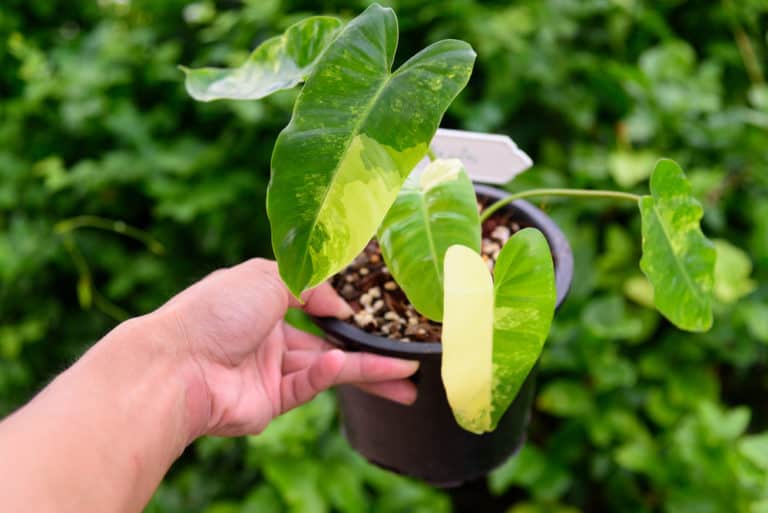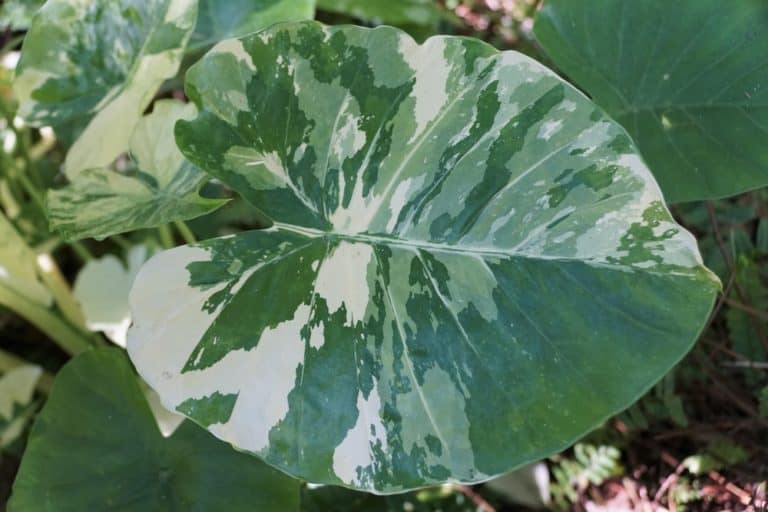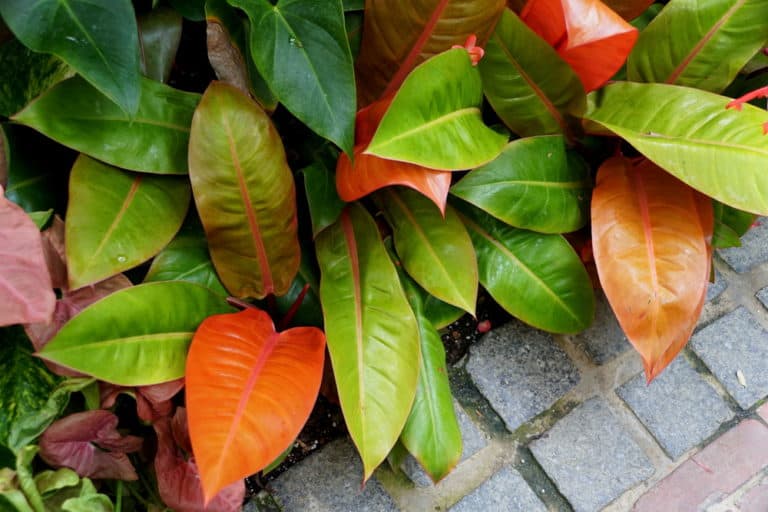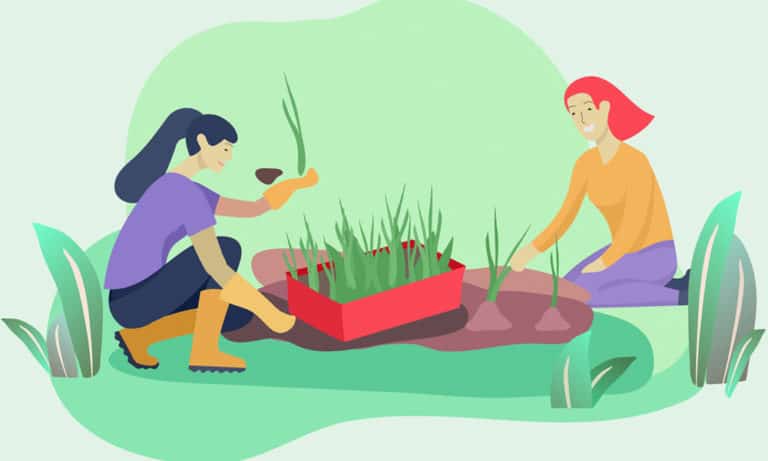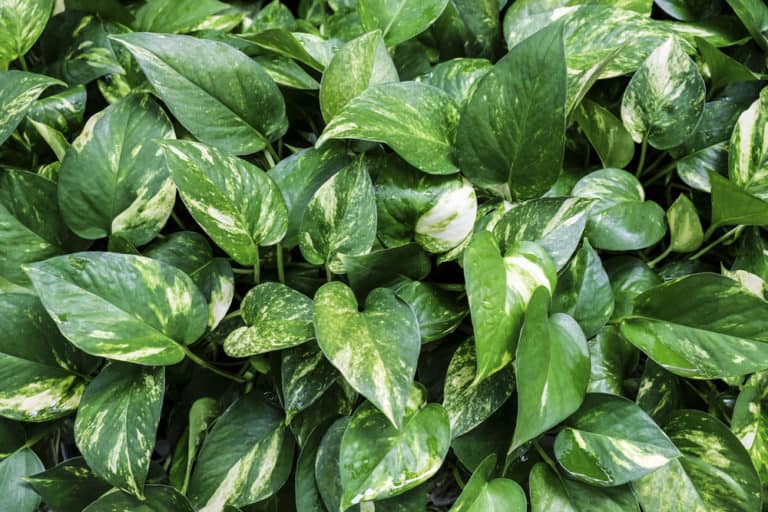Houseplant Statistics in 2024 (incl. Covid & Millennials)

Houseplants are having their moment now.
Much of it is thanks to millennials, plantfluencers, plant-based movement, and work from home culture forced by the pandemic.
Houseplants improve our mental & physical well-being, productivity, and enhance the overall appearance of a space.
Here’s what the latest research tells us about houseplant statistics and facts.
Houseplant Statistics and Facts
Highlights of statistics on houseplants:
- 7 in 10 millennials call themselves a plant parent.
- Average plant parent has killed seven houseplants.
- Houseplant demand surged 18% during the Covid pandemic.
- 66% of American households own at least one houseplant.
- Only 15 minutes of interaction with houseplants reduces stress levels.
- Houseplants improve productivity by up to 15%.
- People with more plants in their workspace take fewer sick days.
- Houseplants remove up to 87% of airborne toxins in just 24 hours.
- Average household spends $608.54 per year on gardening goods.
- 67% of adults are growing or plan to grow edible plants.
1. 7 in 10 millennials call themselves a plant parent.
It’s no secret that the once forgot houseplant obsession is making a comeback, especially among millennials.
Plant parent is a term coined by millennials and refers to caring for houseplants. Plant babies are the actual plants they care for. Plant parenting is much less work and responsibility than parenting actual children or pets but does offer a sense of purpose and joy. (1)
| Identify as Plant Parents | Troubled by Plant Care | Buying New Houseplants |
| 70% of millennials | 48% of millennials | 40% of millennials |
Millennial plant parenthood is a growing trend and one of the reasons is that millennials have postponed having kids and rather rent than own homes, which makes outdoor gardening more difficult.
Article and OnePoll 2020 study on millennials and plants found that 7 in 10 millennials call themselves a “plant parent.” Meaning, caring for houseplants isn’t just a hobby for millennials, but they see themselves playing a parental role for their plants. (2)
The study focused on 2,000 millennials and their relationship with plants. In addition, the results highlight that 48% of millennials are questioning their abilities to keep plants alive and 40% of them plan to buy a new houseplant this year.
2. Average plant parent has killed seven houseplants.
A 2020 Article and OnePoll study on millennials and houseplants found that the average plant parent has killed seven indoor plants they have brought home. And 67% of them call themselves plant murderers. (3)
| Call Themselves Plant Parents | Killed Houseplants by Millennials | Call Themselves Plant Murderers |
| 70% of millennials | 7 houseplants | 67% of millennials |
The study also found the main worries millennials have when it comes to plants. Here are the top five:
| Millennials | Plant Care Worries |
| 60% | Making sure plants get enough sunlight |
| 56% | Making sure plants get enough water |
| 48% | Keeping plants alive |
| 37% | Stressing the plants when relocating |
| 21% | Finding a plant sitter when out of town |
Additionally, four in five study participants felt that plant parenting had led them to better self-care.
Millennial houseplant ownership is trending and it will be interesting to see how it evolves as more people are working remotely and spending more time at home.
3. Houseplant demand surged 18% during the Covid pandemic.
It’s no surprise that during the Covid pandemic, the demand for everything has skyrocketed, so is the case with houseplants. The houseplant trend was already in motion pre-covid, driven by plant parents, plantfluencers, decor trends, and plant collectors.
| Houseplant Sales | Houseplant Prices |
| 18% increase | +15% increase |
In 2021, Garden Center magazine conducted a study with independent garden center owners and managers in the U.S. and Canada to see how houseplant popularity has affected their plant sale statistics. (4)
Compared to last year, garden centers are seeing over 20% of houseplant sales coming from indoor growing jumped up 18% this year over last. And there’s no indication for this growth to slow down anytime soon.
One of the most interesting houseplant sales statistics is that two-thirds of nurseries in the U.S. increased their houseplant prices by more than 15% in 2020 and plan to do the same in 2021.
4. 66% of American households own at least one houseplant.
The indoor plant trend is still strong and growing year over year.
Since 2019 there has been a steady increase in plant ownership among American consumers. Statistics about indoor plants show that 66% of Americans own at least one houseplant in their homes. (5)
| Own at Least One Houseplant | Active Indoor Gardening | No interest in Houseplants |
| 66% of households | 27% of households | 26% of households |
Also, the number of consumers with no interest in owning a houseplant has decreased to 26%.
The fact is that indoor gardening is one of the most common hobbies in the U.S. The statistics show that an estimated 27% (33.1 million) of U.S. households participate in active indoor houseplant gardening. (6)
To understand more the houseplant popularity, we analyzed the most popular Google searches about indoor plants in the U.S. and here are the top plant queries. (7)
| Plant Name | Monthly Searches |
| Snake Plant | 274,000 searches |
| Philodendron | 178,000 searches |
| Aloe Vera | 167,000 searches |
| Peace Lily | 150,000 searches |
| Pothos | 127,000 searches |
| Peperomia | 83,000 searches |
5. Only 15 minutes of interaction with houseplants reduces stress levels.
Today, we are more digitally connected than ever before, which also causes a great deal of stress (e.g. technostress and loneliness). Technostress is a modern disease caused by our inability to cope with ever-developing technologies in a healthy manner. (8)
A study published in the Journal of Physiological Anthropology examined the physiological benefits of interacting with houseplants and found that plants can make you feel more comfortable, soothed, and natural. (9)
Study participants performed one of the two tasks. The first task was repotting a houseplant and the second task was a short computer task. Fifteen minutes after each activity, researchers measured psychological and physiological stress factors.
Analysis of the results showed that indoor plants reduced psychological and physiological stress responses by suppressing autonomic nervous system activity. Only after fifteen minutes, subjects felt more comfortable, soothed, and natural after interacting with plants.
The study also found that the diastolic blood pressure was significantly lower.
Researchers concluded that active interaction with indoor plants could reduce physiological and psychological stress. This means living with plants can have a strong positive effect on our mental health.
There are several other studies that also found that indoor plants relieve physiological stress and negative psychological symptoms. (10, 11)
Based on current studies available, we can say that indoor plants are one of the easiest and most effective ways to reduce stress levels in indoor environments, giving momentum to the plant trend.
6. Houseplants improve productivity by up to 15%.
7. People with more plants in their workspace take fewer sick days.
One of the most interesting indoor plants statistics is the effect on productivity. Several studies have concluded that indoor plants in the workspace increase attention and productivity by 15%.
Research shows that green’ offices make us more productive than a lean interior design without greenery. University of Exeter researchers examined and monitored productivity levels in large commercial offices in the U.K. and The Netherlands. (12)
Researchers concluded that simply adding plants to previously lean workspaces increased productivity by 15%, which aligns closely with findings in previously conducted laboratory studies.
Also, people with more plants in their workspace took fewer sick days. (12)
Another study was conducted in Norway to assess the psychological benefits of indoor plants in workplaces. (13)
Researchers used hierarchical regression analyses to estimate the associations that plants and several often-studied workplace factors have with stress, sick leave, and productivity.
Researchers found a positive association between the number of plants in view and productivity.
There’s an additional interesting study supporting the positive effect of plants on productivity.
This 2002 study found that a single plant had a significant positive effect on the performance of a creative task. (14)
They also investigated the visibility and location of the plants and found that the plant in front of the participant’s position had the greatest effect.
This suggests that even if you aren’t a houseplant enthusiast, there’s a considerable positive effect of having plants around your work environment, be it in the office or at home.
8. Houseplants remove up to 87% of airborne toxins in just 24 hours.
Probably one of the best measurable statistics about the benefits of indoor plants is their air cleaning abilities.
Research conducted by NASA (15) in 1989 found that the roots and soil of houseplants reduced airborne toxins significantly.
The purpose of the research was to find a way to improve the air quality of a spacecraft by removing volatile organic compounds (VOCs) from the air.
The study evaluated the leaves, roots, soil, and associated microorganisms of plants and their effectiveness in cleaning the air.
The study found that common plants foliage reduces the levels of interior pollutants like formaldehyde and carbon monoxide up to 87% in just 24 hours.
Further research confirmed that plants do remove many indoor air pollutants like ozone, toluene, and benzene. (16)
The NASA research has received a lot of negative feedback because the study was conducted in air-tight controlled chambers, which is not repeatable in a regular home or office setting.
Despite that, recent studies have shown that the air cleaning effect does scale up to a building level. (17) In 2006, researchers conducted a field study in 60 offices and used three planting regimes.
Researchers found that airborne toxins levels redacted 50-75% in all offices, suggesting the growing plant obsession among millennials may have a positive benefit to the air quality around them.
All the findings together demonstrate that indoor plants do provide a sustainable, low-cost bioremediation system for indoor air pollution and improve human wellbeing and productivity.
Most popular houseplants do improve the air quality, but here are top ten houseplant air cleaners that are the most effective in removing volatile organic compounds (VOCs) from the air. (18)
- Areca palm
- Lady palm
- Bamboo palm
- Rubber plant
- Dracaena
- English ivy
- Dwarf date palm
- Ficus
- Boston Fern
- Peace lily
9. Average household spends $608.54 per year on gardening goods.
The houseplant industry is booming.
In 2021, National Gardening Association conducted a plant trends survey and found that American gardeners spent a record $52.3 billion on lawn and garden goods and 25% of that was attributed to millennials. (19)
The term for this phenomenon is “plant parenthood.”
The survey also found that an average household (in the 35-44 year age bracket) spent $608.54 per year on gardening goods – up $105.54 over the previous year (20), making this plant hobby a growing trend.
The majority of respondents in this group are raising a family, own a home, and have an established career.
The interest in gardening makes sense. According to community garden statistics, every $1 invested in gardening yields around $6 worth of produce.
10. 67% of adults are growing or plan to grow edible plants.
There are many reasons to grow edible plants, whether you want to save money on groceries, eat the freshest products or introduce kids to a healthy lifestyle.
Indoor gardening statistics show that interest in owning and growing plants is thriving. A 2021 Garden Trends Report found that 67% of adults are growing edible plants. (19)
52% of adults grow vegetables, 33% herbs, and 31% fruits and berries.
In addition, plantfluencers and garden influencers have seen up to 400% on their social media channel followers during the Covid-19 pandemic.
National Gardening Association, plant statistics survey, conducted in 2021 found that younger gardeners’ interest in plants is mainly driven by growing food and having common activity among family.
Yet, older gardeners are mainly driven by the beauty aspect plants provide and to get some physical exercise. (21)
References
- Gardening Know-How. Plant Parenting Trend: Are You A Plant Parent. Link
- Articulate Article. 2020. Survey: Decorating with houseplants. Link
- SWNS Research. 2020. Seven in 10 millennials consider themselves ‘plant parents.’ Link
- Garden Center Magazine. 2021. Blooming and booming. Link
- Civic Science. 2020. Gen Z Houseplant Ownership Stems from the Desire to Care for Something Alive. Link
- Statista. 2021. Indoor houseplant gardening participation in the United States from 2010 to 2019. Link
- Ahrefs. 2021. Keyword explorer. Link
- Giorgia Bondanini, Gabriele Giorgi, Antonio Ariza-Montes, Alejandro Vega-Muñoz, Paola Andreucci-Annunziata. 2020. Technostress Dark Side of Technology in the Workplace: A Scientometric Analysis. Link
- Min-sun Lee, Juyoung Lee, Bum-Jin Park, Yoshifumi Miyazaki. 2015. Interaction with indoor plants may reduce psychological and physiological stress by suppressing autonomic nervous system activity in young adults: a randomized crossover study. Link
- Chen-Yen Chang, Ping-Kun Chen. 2005. Human Response to Window Views and Indoor Plants in the Workplace. Link
- Ernest O. Moore. 2002. A Prison Environment’s Effect on Health Care Service Demands. Link
- The University of Exeter. 2014. Why plants in the office make us more productive. Link
- T. Bringslimark, G.G. Patil, T. Hartig. 2008. The Association Between Indoor Plants, Stress, Productivity, and Sick Leave in Office Workers. Link
- Seiji Shibata, Naoto Suzuki. 2002. Effects of the foliage plant on task performance and mood. Link
- NASA: B.C Wolverton, Anne Johnson, Keith Bounds. 1989. Interior Landscape Plants for Indoor Air Pollution Abatement. Link
- Alan B. Darlington, James F. Dat, Michael A. Dixon. 2000. The Biofiltration of Indoor Air: Air Flux and Temperature Influences the Removal of Toluene, Ethylbenzene, and Xylene. Link
- Ronald A. Wood, Margaret D. Burchett, Ralph Alquezar, Ralph L. Orwell, Jane Tarran, Fraser Torpy. 2006. The Potted-Plant Microcosm Substantially Reduces Indoor Air VOC Pollution: I. Office Field-Study. Link
- Luz Claudio. 2011. Planting Healthier Indoor Air. Link
- Garden Media. 2021. Garden Media’s 2021 Garden Trends Report: The Great Reset. Link
- Garden Media. 2020. Garden Media Group’s 2020 Garden Trends Report: Seeing 20/20. Link
- National Gardening Association. 2021. 2021 National Gardening Survey Released. Link

